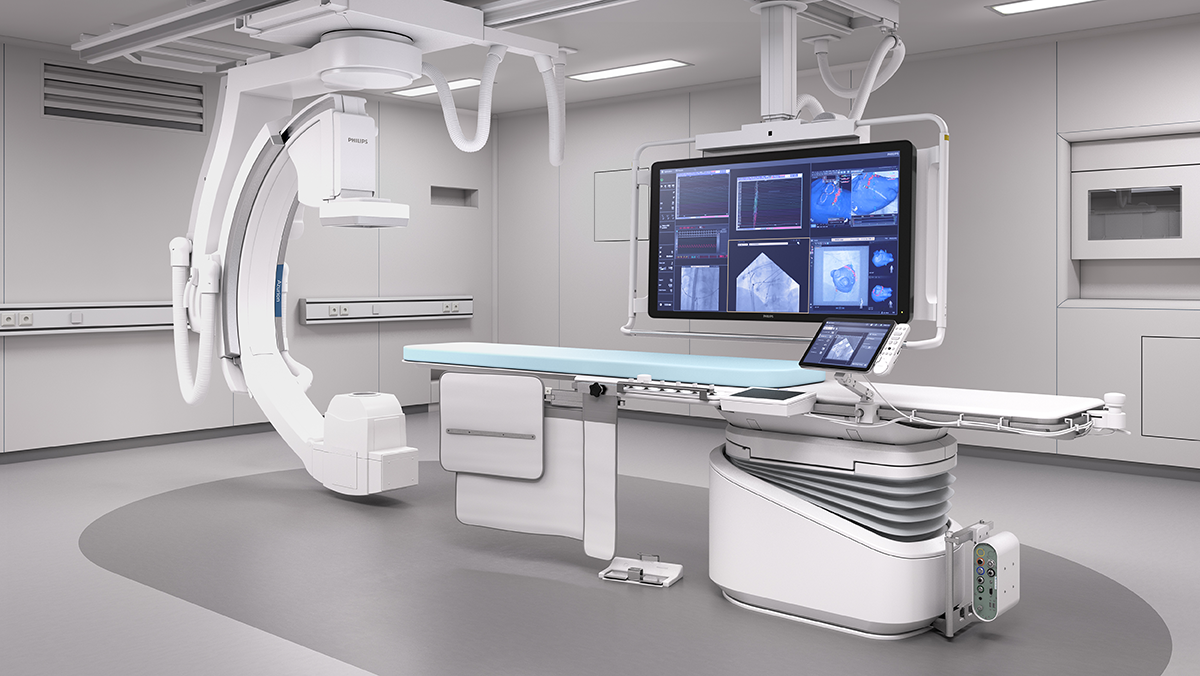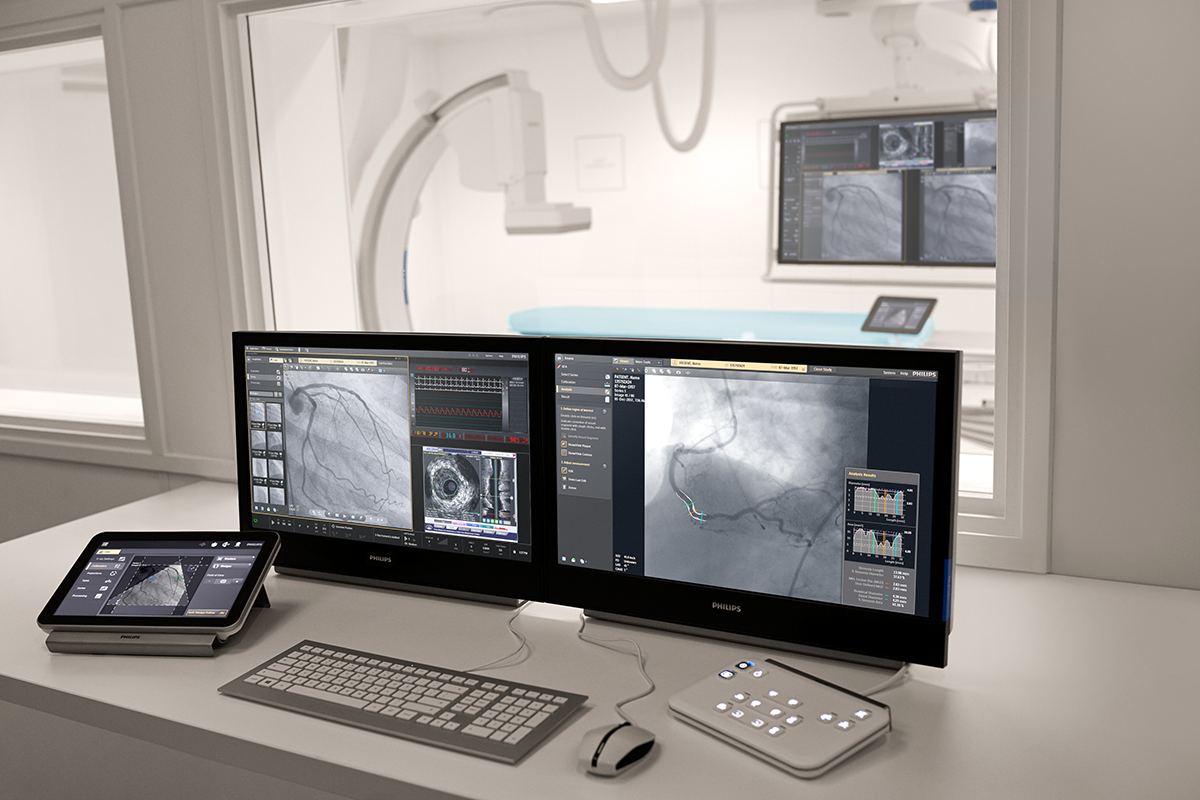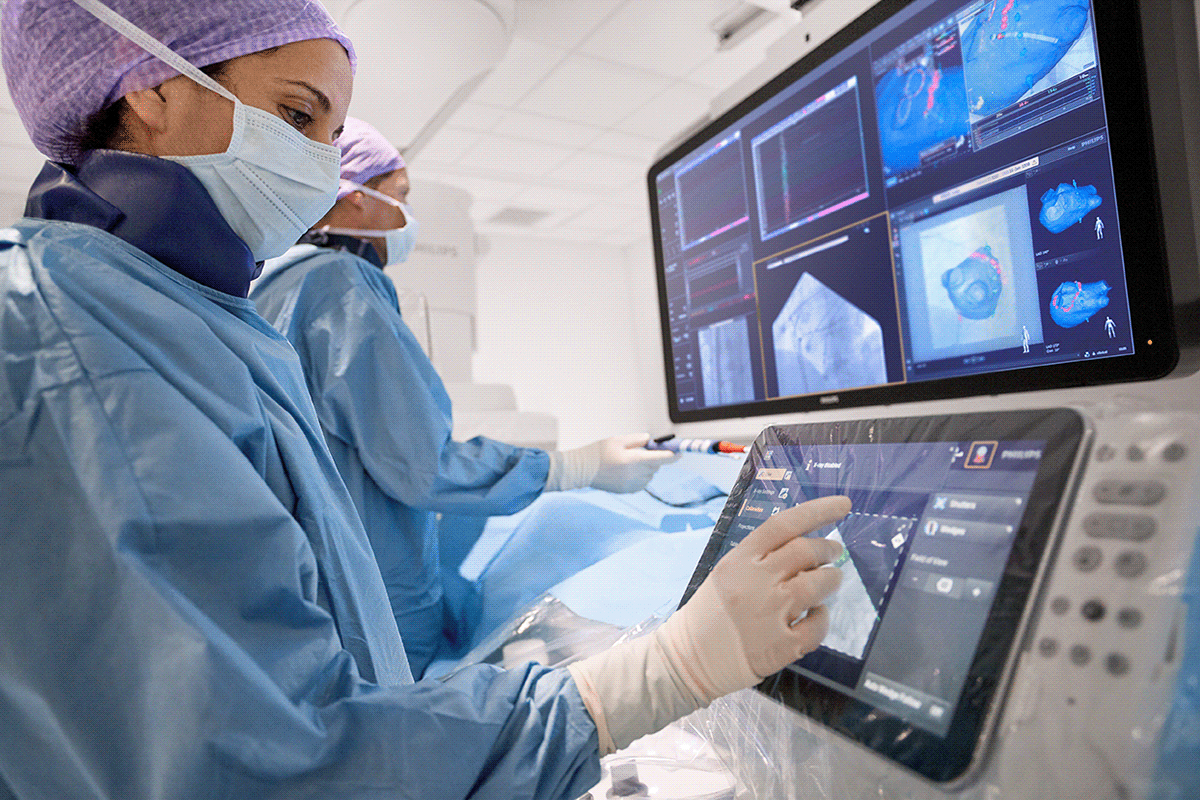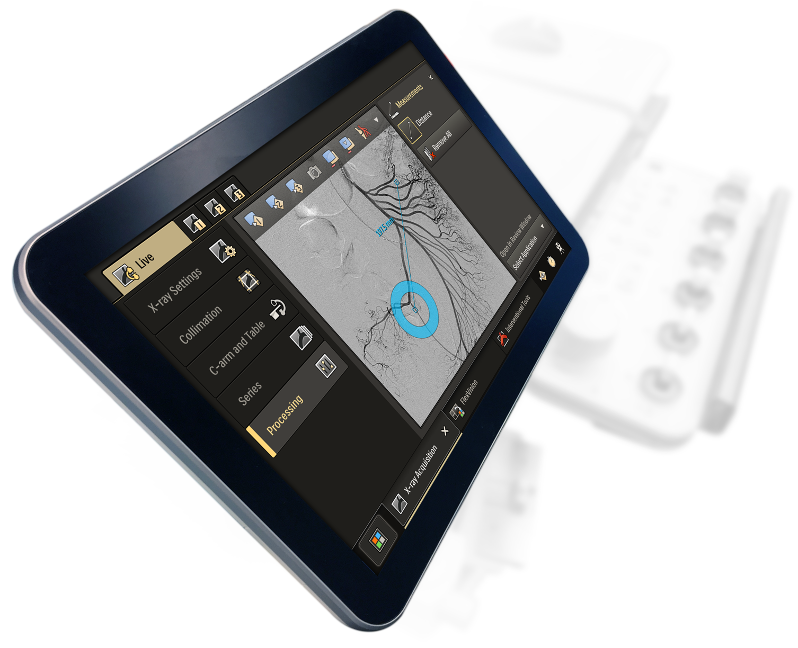Philips Azurion
(Experience Design 2017)
Is the new-generation image guided therapy platform that allows us to easily and confidently perform procedures with a unique user experience, helping to optimize the lab performance and provide superior care.
Information stands out from the distinctive black background and highlights help you easily locate active applications. The system controls backlit icons and distinctly shaped buttons aid in identification.
Includes new experience design features to further improve the quality and efficiency of interventional procedures.
The new workflow approach aims to improve three aspects of interventional workflow.
Here is a summary of the study outcomes performed on 61 participants from Europe and USA:
1. Efficiency
• 100% of the participants believe that the possibility to access and control more applications at tableside (TSM) will reduce the need to walk between the Exam and Control Room.
• 100% of the participants believe that the possibility to display Checklists & Protocols on Azurion will help minimize preparation errors.
• 91% of the participants believe that the concept of using ProcedureCards helps standardize the way of working during an interventional procedure.
• 87% of the participants believe that the possibility to access and control more applications at tableside (TSM) will lead to less miscommunication.
2. Consistency
• 91% of the participants believe that Azurion will help reduce procedure time.
• 93% of the participants believe that Azurion can help them make more efficient use of their time spent in the lab.
3. Intuitive user interaction
• 96% of the participants are satisfied with how easy it is to use Azurion.
• Azurion has a score of 87 on the System Usability Scale.
Awards: Red Dot, iF Design, Good Design, dmi: Design Value, Core77 Design.
Shaped through a Human-Centered Design approach and Health Design Thinking

The X-ray applications family

The new x-ray applications are designed with flexibility in way of working and ease of learning in mind. The design family features applications optimized for desktop usage, viewing, and for operation by a touchscreen module.



The Touch Screen Module (TSM) has become a commonplace in Azurion healthcare settings, leading to rapid growth in the development of medical software applications. Numerous apps/modalities are now available to assist HCPs with many important tasks, such as clinical decision-making.

Touch-screen devices and apps provide many benefits for HCPs, perhaps most significantly increased access to point-of-care tools, which has been shown to support better clinical decision-making and improved patient outcomes. Despite the benefits they offer, still we need better standards and validation practices to be established to ensure the proper use and integration of these increasingly sophisticated tools into medical practice.
With this next-generation Azurion platform, Philips is also introducing a new 3D imaging solution called SmartCT.





